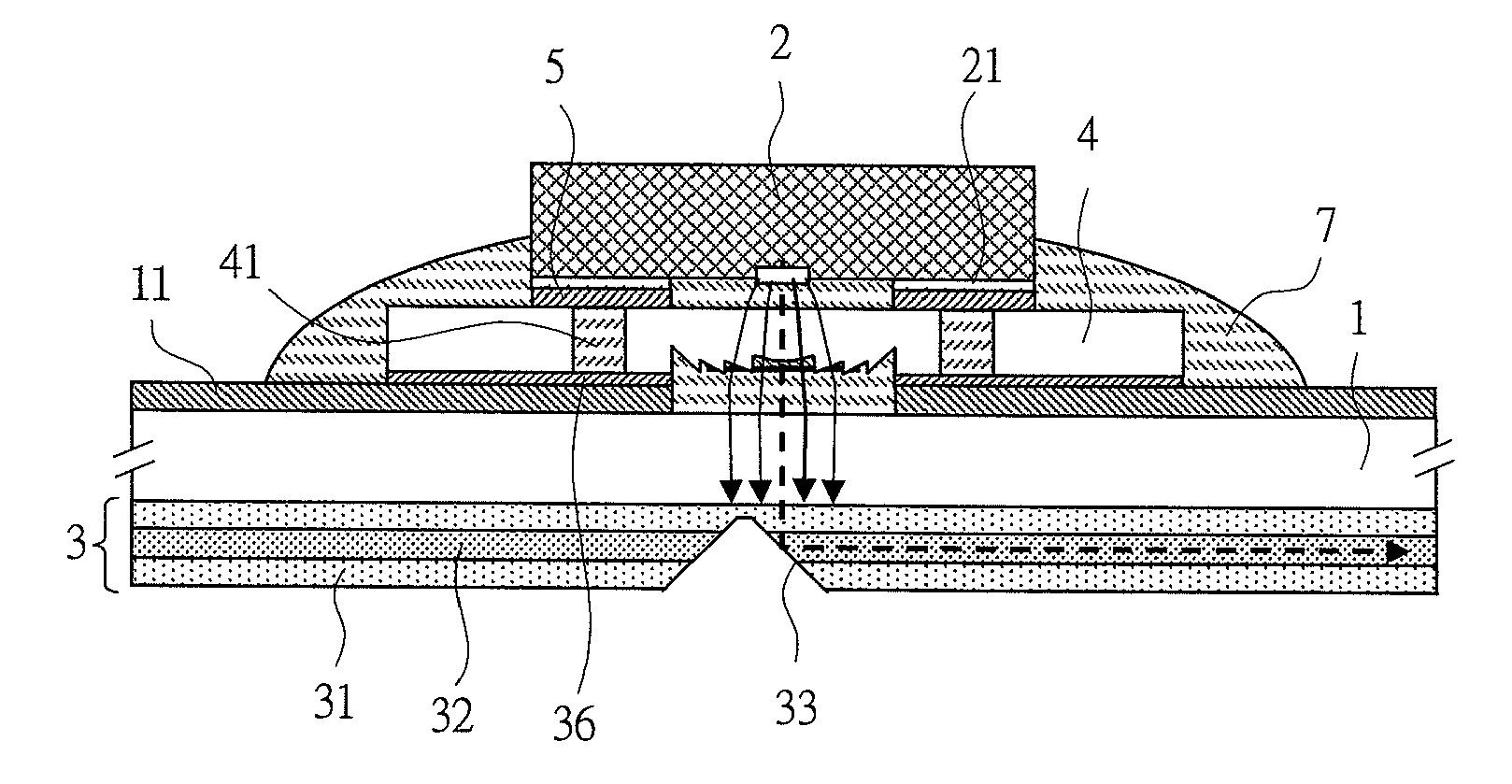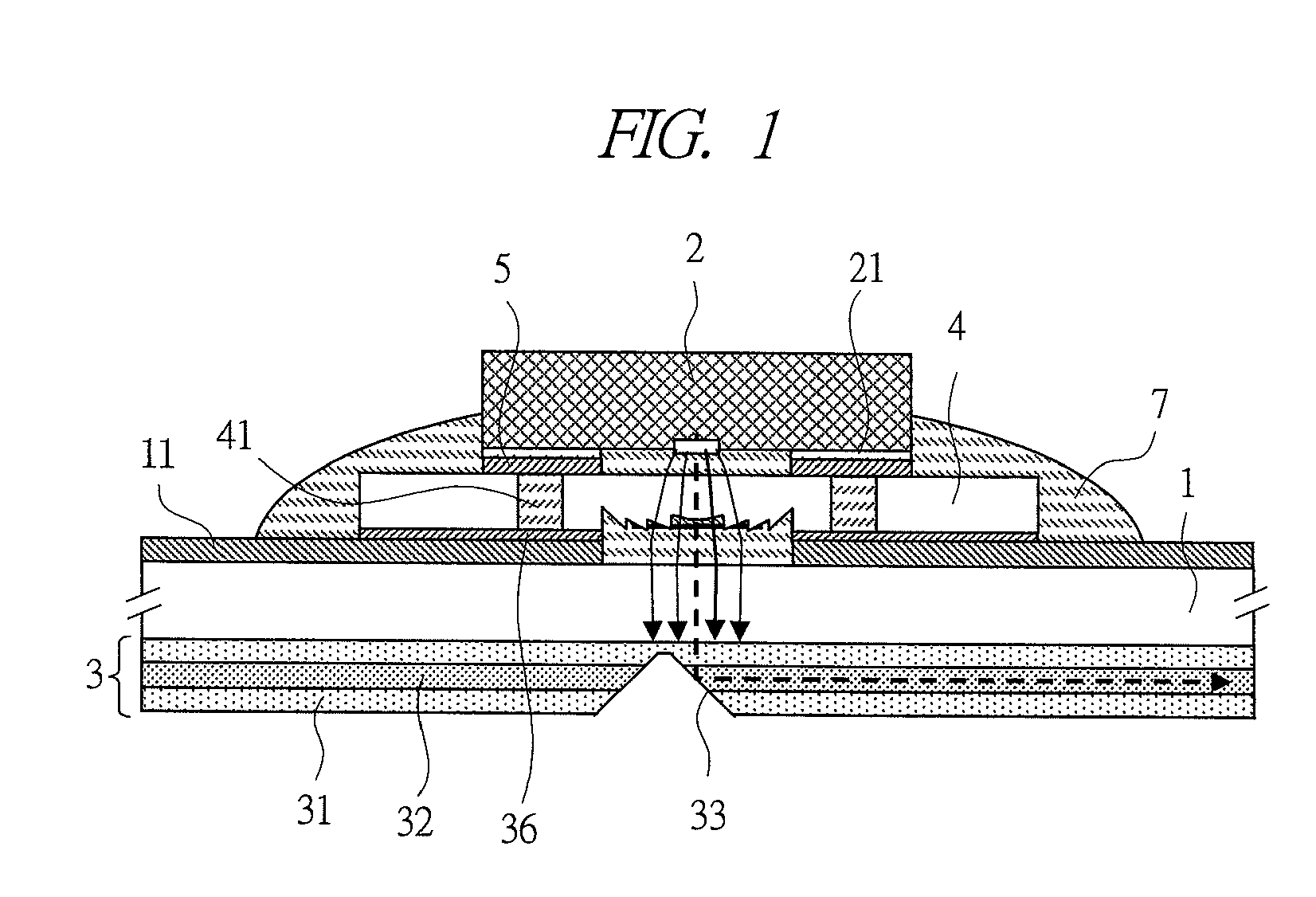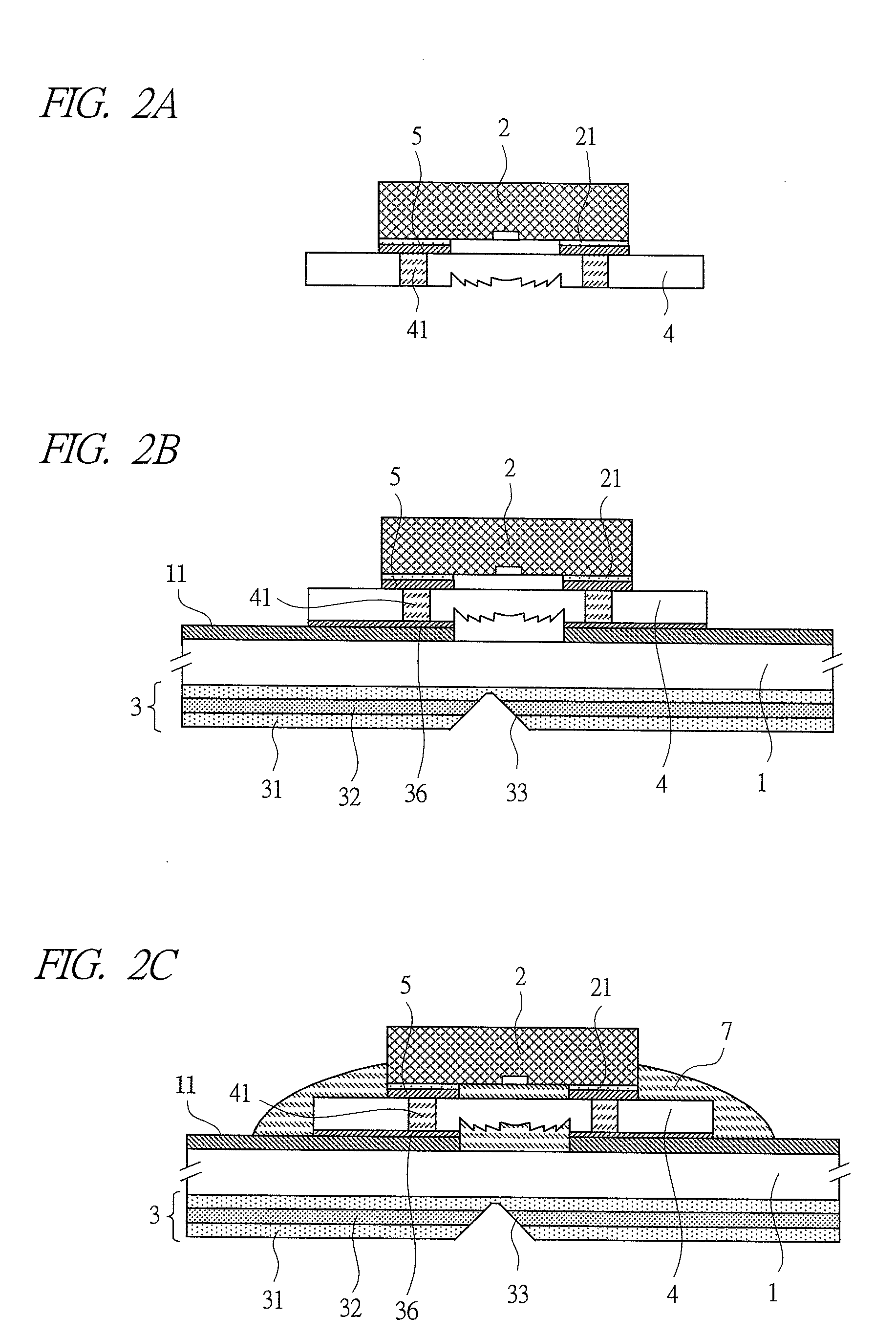Optical module
a technology of optical modules and wiring devices, applied in the direction of optical elements, lenses, instruments, etc., can solve the problems of increased thickness of lenses is not desired, practical upper limit in thickness, etc., to achieve the effect of improving coupling efficiency and high efficiency of light-collective effect or cos
- Summary
- Abstract
- Description
- Claims
- Application Information
AI Technical Summary
Benefits of technology
Problems solved by technology
Method used
Image
Examples
first embodiment
[0048]FIG. 1 is a view of a joint structure between an optical element and a substrate, according to a first embodiment of the present invention. FIGS. 2A to 2C are views describing a joint process according to the first embodiment of the present invention. FIGS. 3A to 3D are views of another joint structure between the optical element and the substrate, according to the first embodiment of the present invention.
[0049]Note that, in FIGS. 1 to 3, it is needless to say that an upper surface of the substrate and a lower surface thereof are not the same cross-sectional view but a developed cross-sectional view. This also goes for embodiments below.
[0050]First, the joint structure of the optical element according to the first embodiment is described with reference to FIG. 1. In FIG. 1, electric wiring 11 is formed on a surface of a substrate 1. In the present embodiment, a flexible substrate made of a polyimide film is used for the substrate 1. Here, a member of the electric wiring 11 ha...
second embodiment
[0090]Next, a second embodiment of the present invention is described with reference to FIGS. 7 to 9.
[0091]FIG. 7 is a cross-sectional view illustrating a joint structure between an optical element and a substrate, according to a second embodiment of the present invention. FIGS. 8A to 8D are views describing a joint process between the optical element and the substrate, according to the second embodiment of the present invention. FIG. 9 is a view describing a structure example of the joint structure between the optical element and the substrate, according to the second embodiment of the present invention.
[0092]Note that, even in the present embodiment, the description is made with using kapton formed of the polyimide film as the substrate 1 and using VCSEL as the optical element 2.
[0093]In the present embodiment, the optical element 2 is directly jointed to the substrate 1. And, a resin lens 45 having a Fresnel lens shape is arranged between the substrate 1 and the optical element 2...
third embodiment
[0109]Next, an example of an optical wiring device using an optical-element joint structure according to this present embodiment is described with reference to FIG. 10. FIG. 10 is a schematic view for describing an optical wiring device using an optical-element joint structure according to a third embodiment of the present invention.
[0110]In this figure, in the electric wiring 11 on an upper surface of the substrate 1, a vertical cavity surface emitting laser (VCSEL) 80, a driver IC 90 for driving the vertical cavity surface emitting laser (VCSEL) 80, a photodiode (PD) 85, and a preamplifier IC 95 for amplifying small signals from the PD 85 with low noises are mounted by flip chip bonding.
[0111]Inside portions corresponding to optical paths between the VCSEL 80 and the substrate 1 and between the PD 85 and the substrate 1, a non-filler content underfill resin 71 is filled. Similarly to the driver IC 90 and the preamplifier IC 95, an underfill resin 72 is filled.
[0112]On a lower surf...
PUM
 Login to View More
Login to View More Abstract
Description
Claims
Application Information
 Login to View More
Login to View More - R&D
- Intellectual Property
- Life Sciences
- Materials
- Tech Scout
- Unparalleled Data Quality
- Higher Quality Content
- 60% Fewer Hallucinations
Browse by: Latest US Patents, China's latest patents, Technical Efficacy Thesaurus, Application Domain, Technology Topic, Popular Technical Reports.
© 2025 PatSnap. All rights reserved.Legal|Privacy policy|Modern Slavery Act Transparency Statement|Sitemap|About US| Contact US: help@patsnap.com



